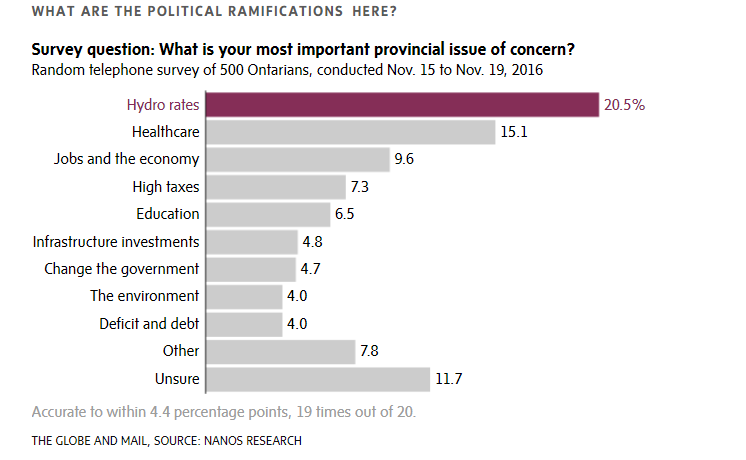Ontario, Canada, to Scrap 758 Renewable Energy Contracts to Protect Ratepayers
The new conservative government in Ontario, Canada, will cancel 758 renewable energy contracts in an effort to lower electricity rates in the province. The move is expected to save ratepayers $790 million (in Canadian dollars) in the coming years.
According to Renewable Energy Now, Greg Rickford, the Minister of Energy, Northern Development, and Mines, said the move is part of a campaign pledge the Progressive Conservatives made during the spring election to end the projects:
“We clearly promised we would cancel these unnecessary and wasteful energy projects as part of our plan to cut hydro rates by 12% for families, farmers and small businesses.” [Editor’s note: the term “hydro” is used as a catch-all term for electricity in Ontario].
Rickford also stated:
“For 15 years, Ontario families and businesses have been forced to pay inflated hydro prices so the government could spend on unnecessary and expensive energy schemes,” Rickford said. “Those days are over.”
What Prompted the Backlash Against Renewables?
Simply put, the backlash against renewable energy programs was prompted by skyrocketing electricity prices. Ontario now has the highest electricity prices in Canada, and the top rate for electricity prices has risen four times faster than the rate of inflation since 2006.
As a result, the high cost of electricity became the number one source of frustration for Ontario voters.

If you look at the graph below, you’ll see prices steeply climbing and then suddenly falling after November of 2016. Was this caused by a breakthrough in renewable energy technology that we are so often promised?
No, it was caused by politicians fearing the wrath of voters who were infuriated over the rising costs of electricity.

The fury over electricity prices caused politicians to enact a 25 percent cut to electricity prices to hide the results of their misguided policies:
“The province would achieve the rate reduction by “refinancing” long-term power generation contracts to even longer terms, not unlike extending a mortgage over a longer amortization period, but said it would not affect the government’s ability to maintain a balanced budget in 2018.
“Over time, it will cost a bit more. And it will take longer to pay off. But it is fairer – because it doesn’t ask this generation of hydro customers alone to pay the freight for everyone before and after.”
What caused this problem in the first place?
According to an article in the Globe and Mail:
“Today’s high prices are largely the result of provincial policy decisions made during the 2000’s.
When the Ontario Liberal Party came to power in 2003, the province’s electricity grid was aging and creaky, and Ontario had to import power to meet its needs. The province was also haunted by the memory of Ontario Hydro’s disastrously overbudget nuclear construction projects in the 1980’s and 90’s. What’s more, the Liberals had been elected in part on a promise to close down the province’s coal-fired power plants.
So the government went on a building spree, upgrading aging infrastructure and commissioning new natural gas, wind and solar plants to replace the coal plants.”
Lessons for Minnesota
Minnesota’s electricity prices have skyrocketed as a result of the state’s goals of closing coal-fired power plants and the decision to spend $15 billion on wind turbines and the transmission lines needed to move the electricity generated by wind to major population centers.
Amazingly, many of the candidates for public office want to increase the amount of renewable energy generated by the state.
Who will stand up for ratepayers?